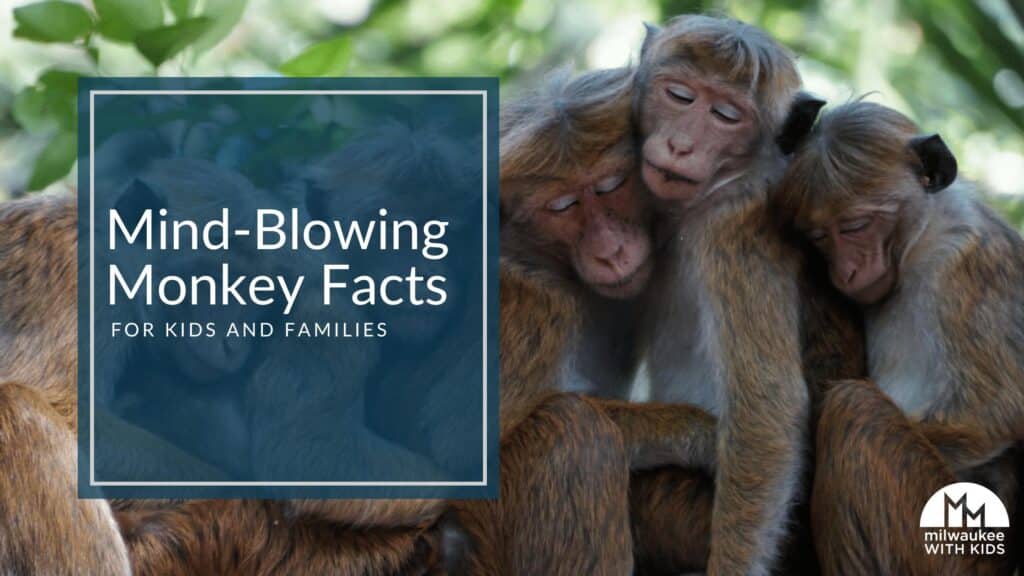
Attention all monkey lovers and curious explorers!
Are you amazed by the intelligence of primates or simply love their playful, cuddly charm? You’re in the right place! Our collection of fun and fascinating monkey facts for kids is sure to leave you swinging with excitement. So, grab a banana and get ready to discover some amazing monkey trivia!
And don’t stop there—did you know we also have awesome facts about other wild wonders? After this, check out some amazing Rhino Facts for Kids or uncover incredible Elephant Facts for Kids to keep the adventure going!
Fascinating Facts About Monkeys
There are over nearly 200 species of monkeys worldwide. (Source: Brittanica.com)
Monkeys have opposable thumbs, enabling them to use tools and play games. Think you could beat a monkey in a video game? (Source: LiveScience.com)
There are two main types of monkeys:
- New World monkeys live in the Americas and have prehensile (gripping) tails.
- Old World monkeys, found in Asia and Africa, do not have prehensile tails. (Source: LiveScience.com)
Howler monkeys are the loudest land animals, with calls heard up to 3 miles away. (Source: National Geographic)
A howler monkey’s tail is five times longer than its body, helping them balance.

The Pygmy Marmoset is the smallest monkey, about 4–4.5 inches long—roughly the size of a banana! (Source: National Geographic) Want to compare its size to another adorable creature? Check out Red Panda Facts for Kids for more tiny animal surprises.
Pygmy marmosets have sharp teeth to gouge tree trunks for sap—an unusual syrup strategy! (Source: LiveScience.com)

Squirrel monkeys use more than 25 calls, including barks, purrs, and peeps. (Source: Brittanica.com)
The Lesula monkey was discovered in the Democratic Republic of Congo in 2007. (Source: PLOS Journals)
Male proboscis monkeys have noses up to 3.9 inches long, thought to attract females. They can also swim! (Source: LiveScience.com)
Proboscis monkeys are the best swimmers of all monkeys, and often land in the water with a belly flop – ouch! (Source: National Geographic)
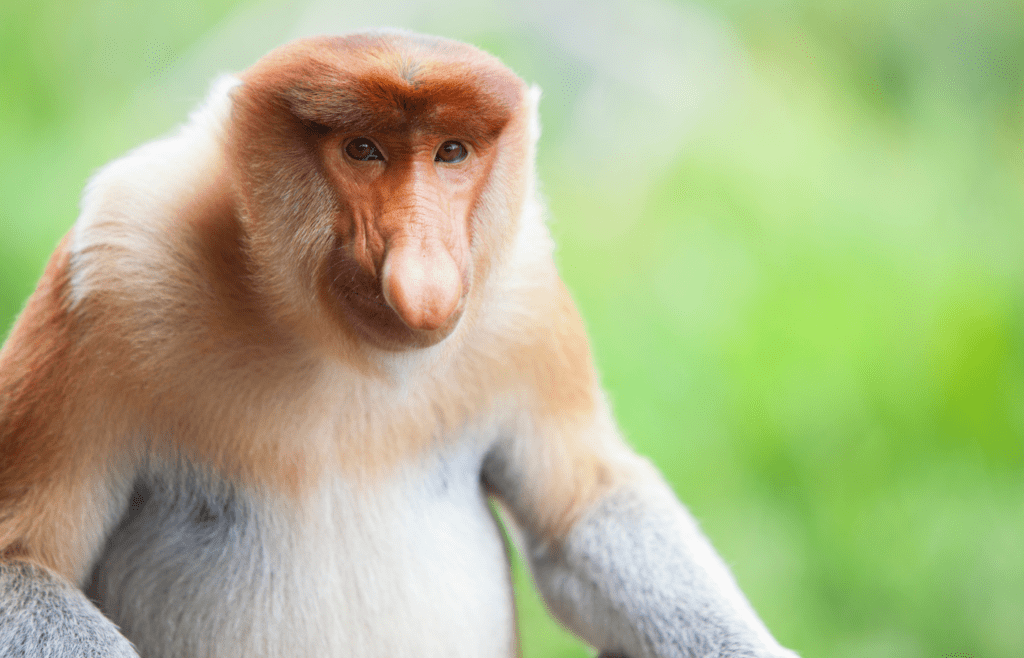
Adult monkeys can live between 10 and 50 years. (Source: KonnectHQ Nature & Science)
Monkeys have tails, but apes don’t. Now you know! (Source: KonnectHQ Nature & Science)
Every monkey has a unique fingerprint, just like humans. Do you think they use their fingerprint to unlock their iPhone?
Antarctica is the only continent with no monkeys. Can you think of the other six continents? (Source: KonnectHQ Nature & Science)
The furriest monkeys are Golden Snub-nosed Monkeys who live in the cold snowy mountains of China. (Source: National Geographic)
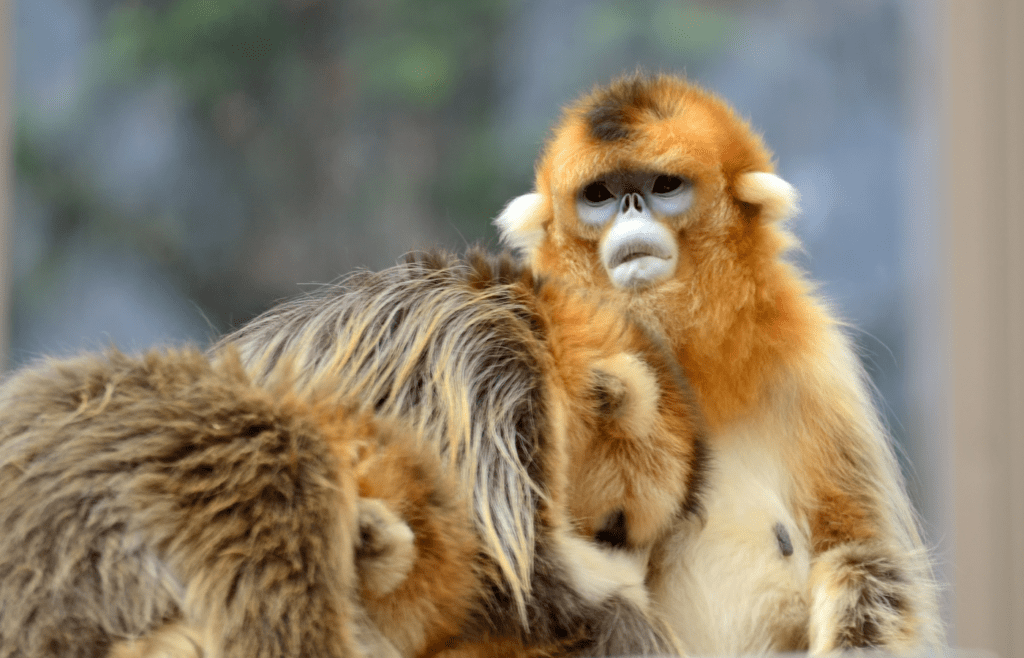
Patas are the fastest monkeys (and the fastest primates!). They can run up to 35 miles per hour, or as fast as a race horse. They can sprint from zero to 33 miles an hour in just three seconds. (Source: National Geographic)
Patas live in groups divided by sex. That means a male Patas monkey lives only with other males and females live only with other females. (Source: LiveScience.com)
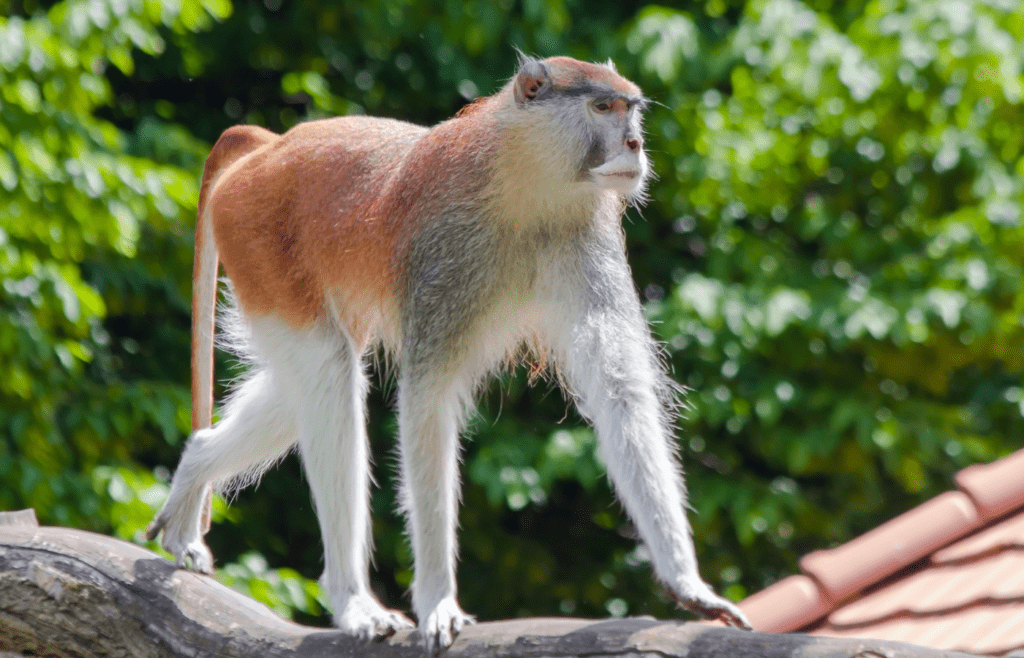
Capuchin Monkeys are sometimes kept as pets, but they are not domesticated. Wildlife experts strongly advise against keeping Capuchin Monkeys as pets. (Source: National Geographic)
White-throated Capuchin Monkeys spend most of their lives in trees. (Source: National Geographic)
Capuchin Monkeys actually use tools. For example, they smash nuts with rocks and use large branches to club snakes. (Source: LiveScience.com)
White-faced Capuchin Monkeys say hello by sticking their finger up each other’s noses. Yep, it’s true. (Source: National Geographic)
Ayla the Capuchin Monkey goes to Monkey College! Ayla lives at a school that trains capuchins to assist disabled people who can’t use their hands. (Source: National Geographic)
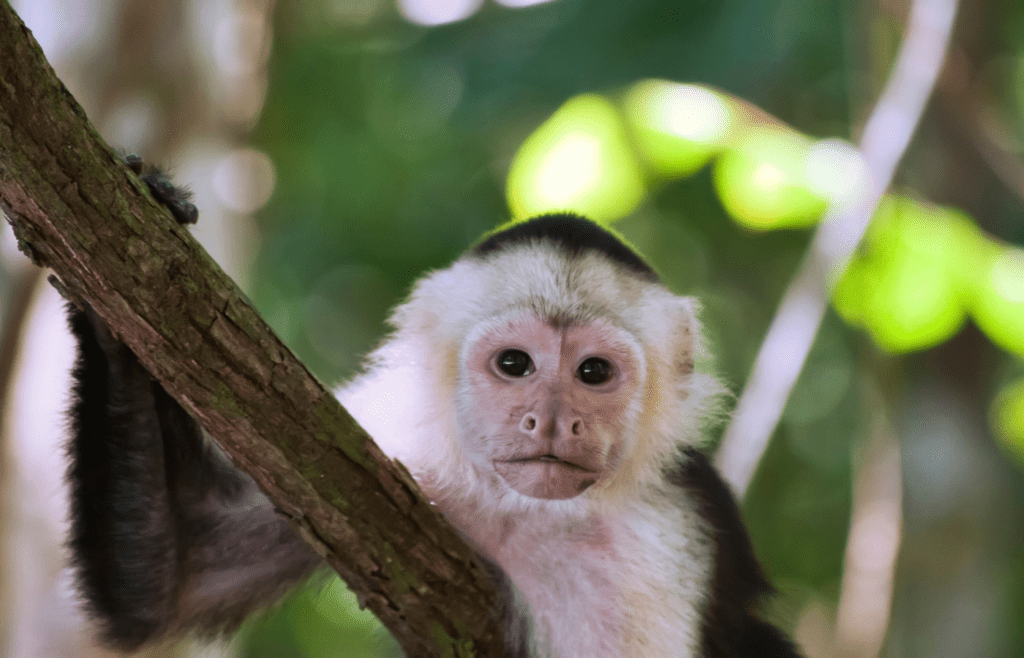
Spider monkeys are incredibly social, living in groups of up to 36 during the day and splitting into smaller groups to sleep at night. They have prehensile tails for gripping branches. (Source: National Geographic)
Spider Monkeys have no thumbs. But they have prehensile tails (that means they can grip the branch) that allow them to move gracefully from tree branch to tree branch. (Source: National Geographic)
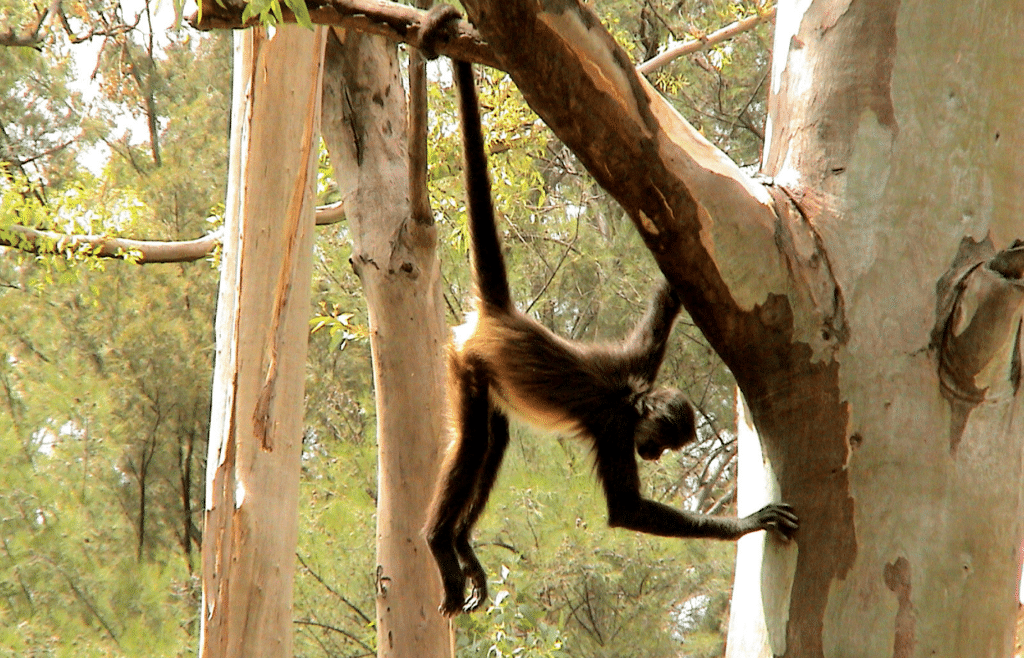
Titi monkeys mate for life, showing love by intertwining tails and cuddling. (Source: LiveScience.com)
Groups of monkeys are called missions, tribes, troops or cartloads. These groups work together to take care of the young monkeys, play, and cuddle. (Source: LiveScience.com)
The largest monkey is the leader of the troop. They fight for the position, so they have to be the strongest, too! Once they are the leader, they can mate with any of the females. (Source: LiveScience.com) Similarly, Grey Wolf Facts for Kids reveal how wolves operate in packs with strong leaders guiding their survival strategies.
A baby monkey is considered an adult between four and five years old. Female monkeys are usually the ones to care for their children. (Source: LiveScience.com)
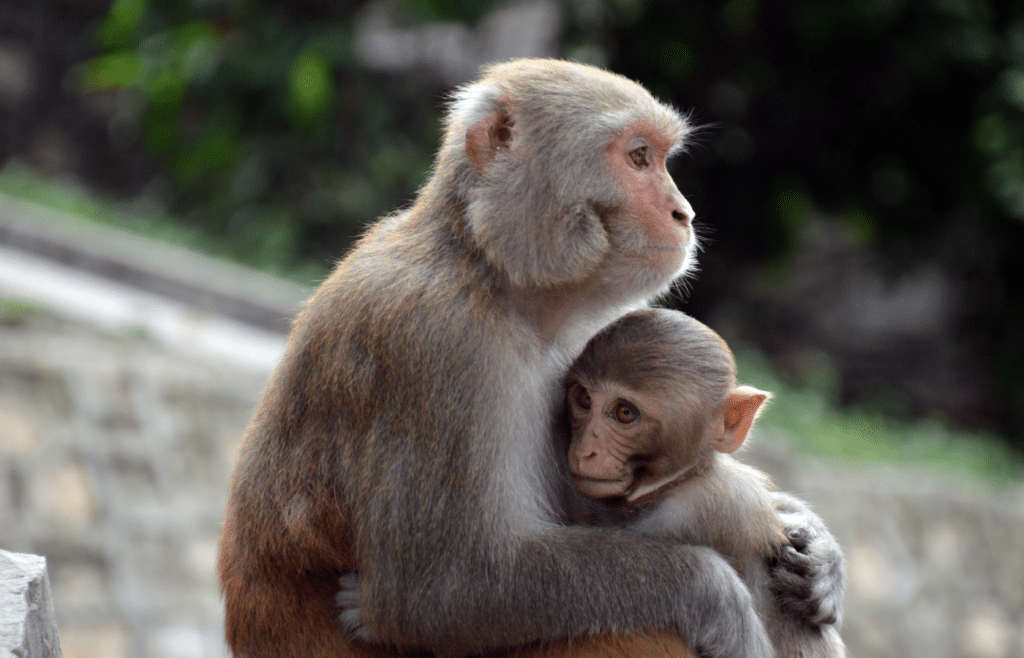
The first living creature in space was a Rhesus Monkey named Albert I. He went to space even before humans! His launch took place in White Sands, New Mexico, on June 11, 1948. They sent him to space instead of a human because they wanted to see if it was safe before they sent humans up. How do you think he felt? (Source: NASA)
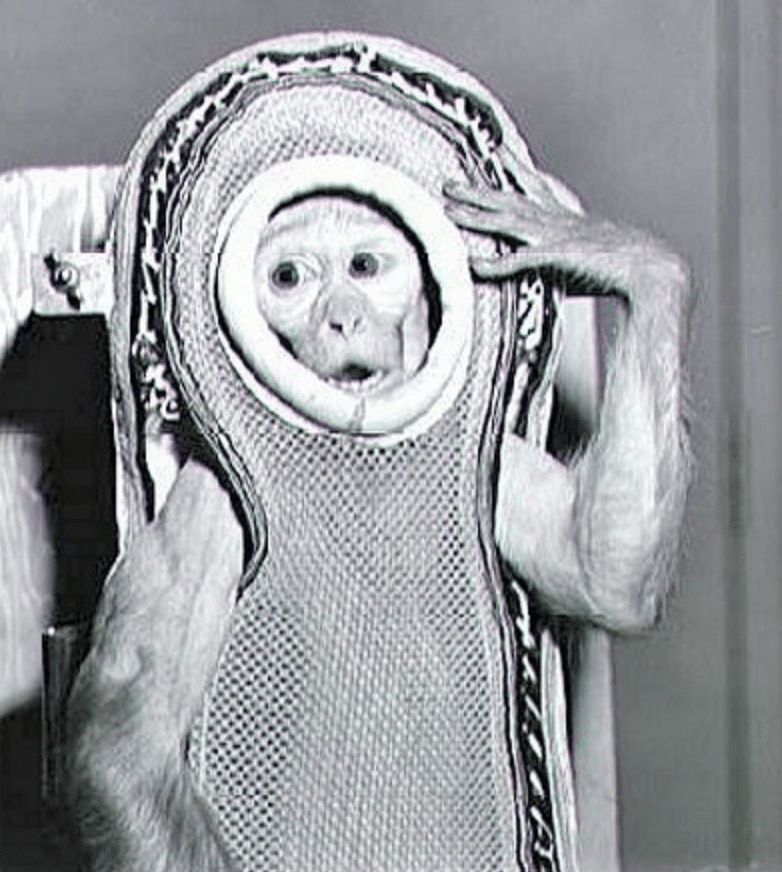
Monkeys can remember specific routes in the forest when moving from one region of the forest to another.
Owl monkeys have eyes that can see in the dark. They can communicate with each other using scents.
Apes are not considered to be monkeys.
Some species of monkeys can see in color while others can only differentiate between black and white.
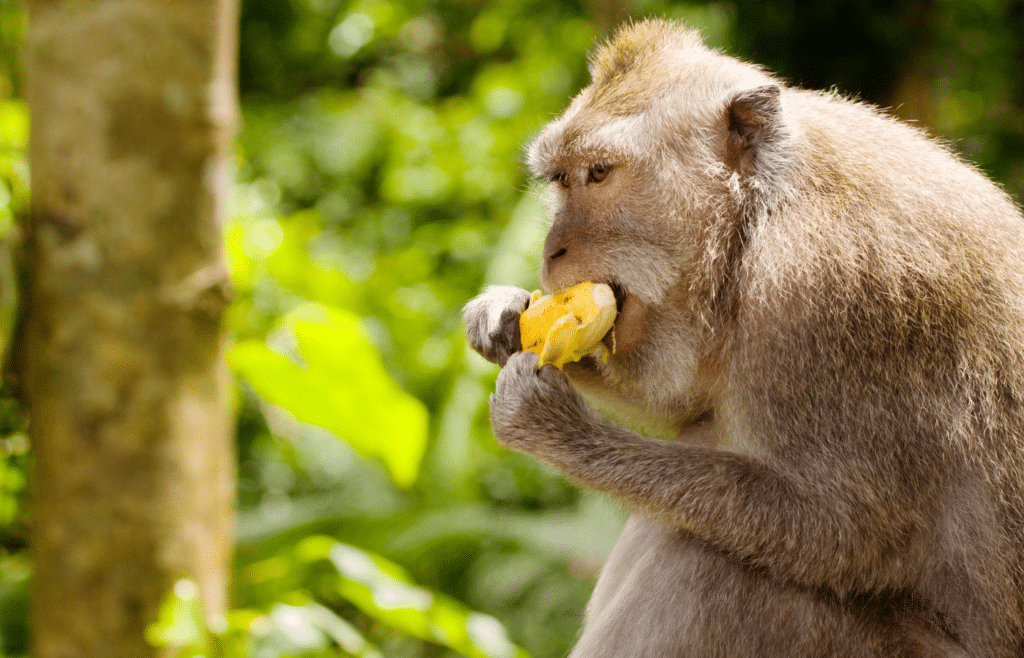
Old-world Monkeys fill their cheek pouches with food. They swallow it later when they find a safe place to rest.
Monkeys eat nuts, fruits, seeds, and flowers. Some monkeys also eat meat like bird eggs, small animals like lizards, small insects and spiders. (Source: LiveScience.com)
The word monkey might have come from a popular German story called “Roman de Renart” (Reynard the Fox). In that story, the name of the son of Martin the Ape is Moneke. Kind of sounds like “monkey”! (Source: Kids.kiddle.co)
In some cultures, monkeys are hunted for bushmeat or their brains.
The Hindu monkey god Hanuman symbolizes strength, courage, and longevity.
Male Mandrills are the largest monkeys. An adult male can be 3 feet long and weigh up to 100 pounds. (Source: National Geographic)
The bright blue and red colors on a Mandrill’s face get brighter when they are excited. They also have pouches in their cheeks where they store food for snacks. (Source: LiveScience.com)
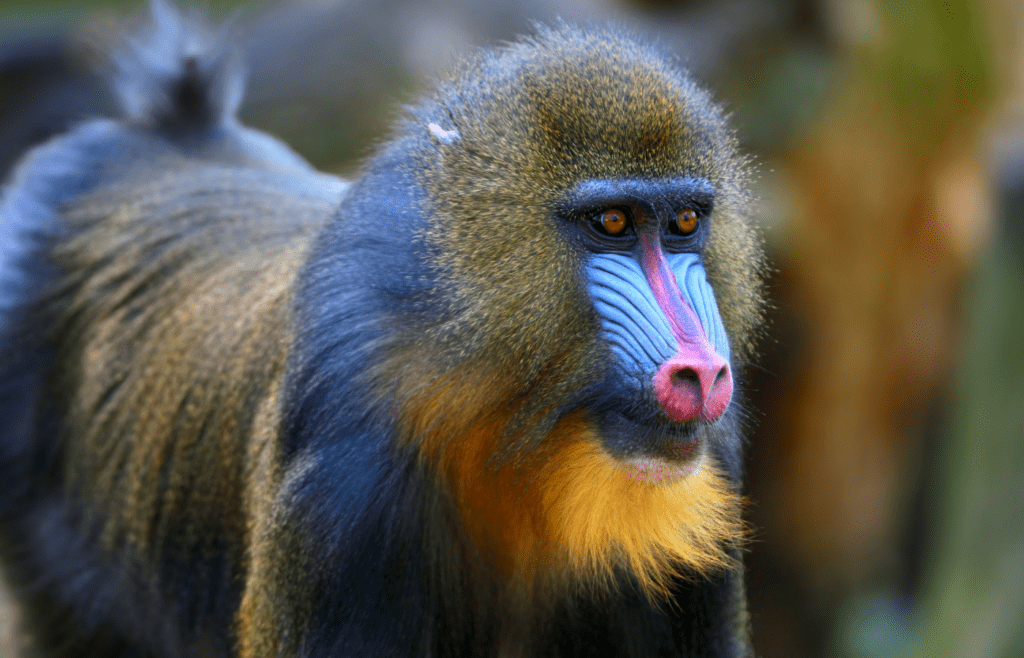
Macaques use many facial expressions to communicate. They use their ears, brows, eyes and mouth to express different emotions, just like you!
Grinning is actually a sign of aggression in monkeys. So is yawning, head bobbing, and pulling the lip. (Source: LiveScience.com)
Monkeys express affection by grooming each other—a sign of trust and bonding. (Source: LiveScience.com)

Monkeys sleep about 9.5 hours per night. How does that compare to your sleep?
Nocturnal monkeys in South America can sleep up to 17 hours a day.
Monkeys often sleep sitting upright on trees and branches to avoid predators.
Many types of monkeys are endangered species, or at risk of dying out completely. They face major threats like habitat loss, which means people have cut down the trees in large parts of the tropical forests where monkeys live. People also hunt monkeys for their meat and fur. In addition, some monkeys are captured and sold as pets. (Source: Brittanica.com)
There are only 150 Tonkin Snub-Nosed Monkeys in existence. (Source: LiveScience.com)
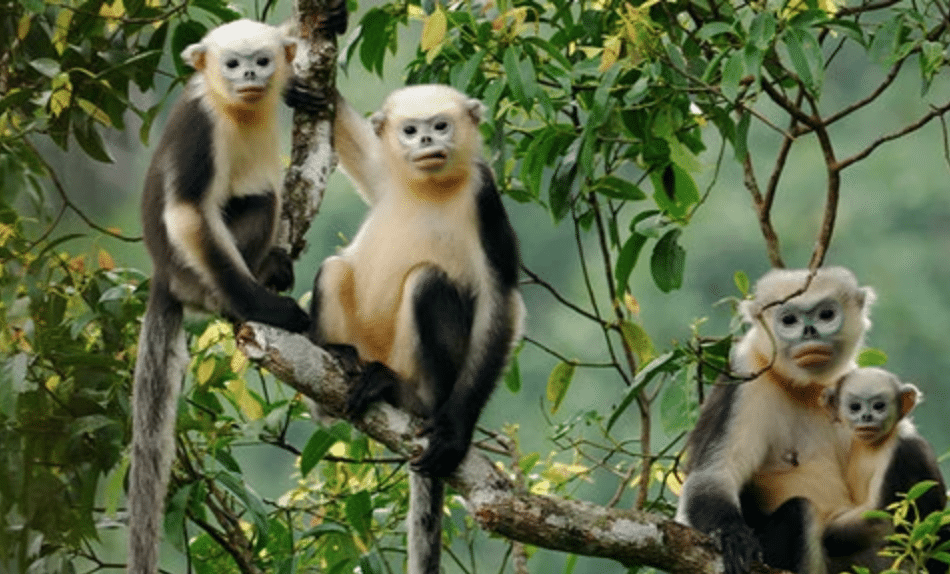
Frequently Asked Questions About Monkeys
A: Monkeys often sleep while sitting upright in trees. This position helps them stay alert to predators and maintain balance on branches.
A: Monkeys have a diverse diet, including fruits, nuts, seeds, flowers, and sometimes meat, such as bird eggs, insects, and small lizards. Old World monkeys often use cheek pouches to store food for later.
A: There are nearly 200 species of monkeys worldwide, divided into two main groups: New World monkeys (found in the Americas) and Old World monkeys (found in Asia and Africa).
A: Monkeys typically have tails, while apes do not. Additionally, apes are generally larger and more intelligent than monkeys.
A: The Pygmy Marmoset is the smallest monkey, measuring about 4–4.5 inches long, roughly the size of a banana!
A: Many monkey species are endangered due to habitat loss, hunting, and illegal pet trade. Conservation efforts are essential to protect their populations.
A: Yes, monkeys have unique fingerprints, just like humans!
A: Howler monkeys are the loudest land animals. Their calls can be heard up to three miles away!
A: Yes, some species, like Capuchin monkeys, are known to use tools. They might use rocks to crack nuts or branches to fend off snakes.
A: The lifespan of monkeys varies by species, ranging from 10 to 50 years in the wild.
A: Monkeys are found on every continent except Antarctica.
A: You can help by supporting conservation efforts, choosing sustainable products, reducing your carbon footprint, and spreading awareness about the challenges monkeys face.
Protecting Endangered Monkeys
Protecting endangered monkeys is a cause we can all contribute to—every action, no matter how small, makes a difference. While you’re helping monkeys, did you know that sea turtle facts and emperor penguin facts highlight similar challenges?
Here are some impactful ways you can help:
- Support conservation efforts: Donate to or volunteer with organizations dedicated to protecting primates and their habitats. Your support funds crucial research, education, and conservation work.
- Say no to products made from endangered species: Avoid items like traditional medicines, cosmetics, and souvenirs made with parts of endangered animals to reduce demand and protect wildlife.
- Choose sustainable options: Deforestation, driven by products like palm oil, threatens monkey habitats. Opt for products made with sustainably sourced palm oil or alternatives to help preserve their homes.
- Reduce your carbon footprint: Climate change is one of the biggest threats to wildlife. Simple lifestyle changes, like using energy-efficient appliances or reducing waste, can have a big impact.
- Spread the word: Educate others about the challenges monkeys face and inspire them to join the fight to protect these incredible creatures.
Together, we can ensure a brighter future for these intelligent and fascinating animals.
To learn more about how you can help protect endangered monkeys, visit pasa.org. Let’s make a difference, one step at a time!
Love learning about the animal kingdom? Don’t stop here—check out Shark Facts for Kids or Cheetah Facts for Kids, White Tiger Facts For Kids, and Interesting Facts About Snakes to keep the wild adventures going.
Calie Herbst, Editor-in-Chief of Milwaukee With Kids, has spent over a decade combining her experiences as a parent of three to create a hub for Milwaukee’s family adventures.
Her decade-long teaching career in Milwaukee Public Schools and academic background, including a Master’s in Teaching from Marquette University and dual B.A.s in Sociology and Spanish from the University of Wisconsin – Madison, fuel her passion for inclusive and engaging family content.
Calie is also a recognized voice in local media, contributing to WISN Channel 12 News, WTMJ Wisconsin Morning News, Fox 6’s Real Milwaukee, and B93.3.
Discover more about Calie’s journey and editorial approach on her About Page and Editorial Policy Page.











